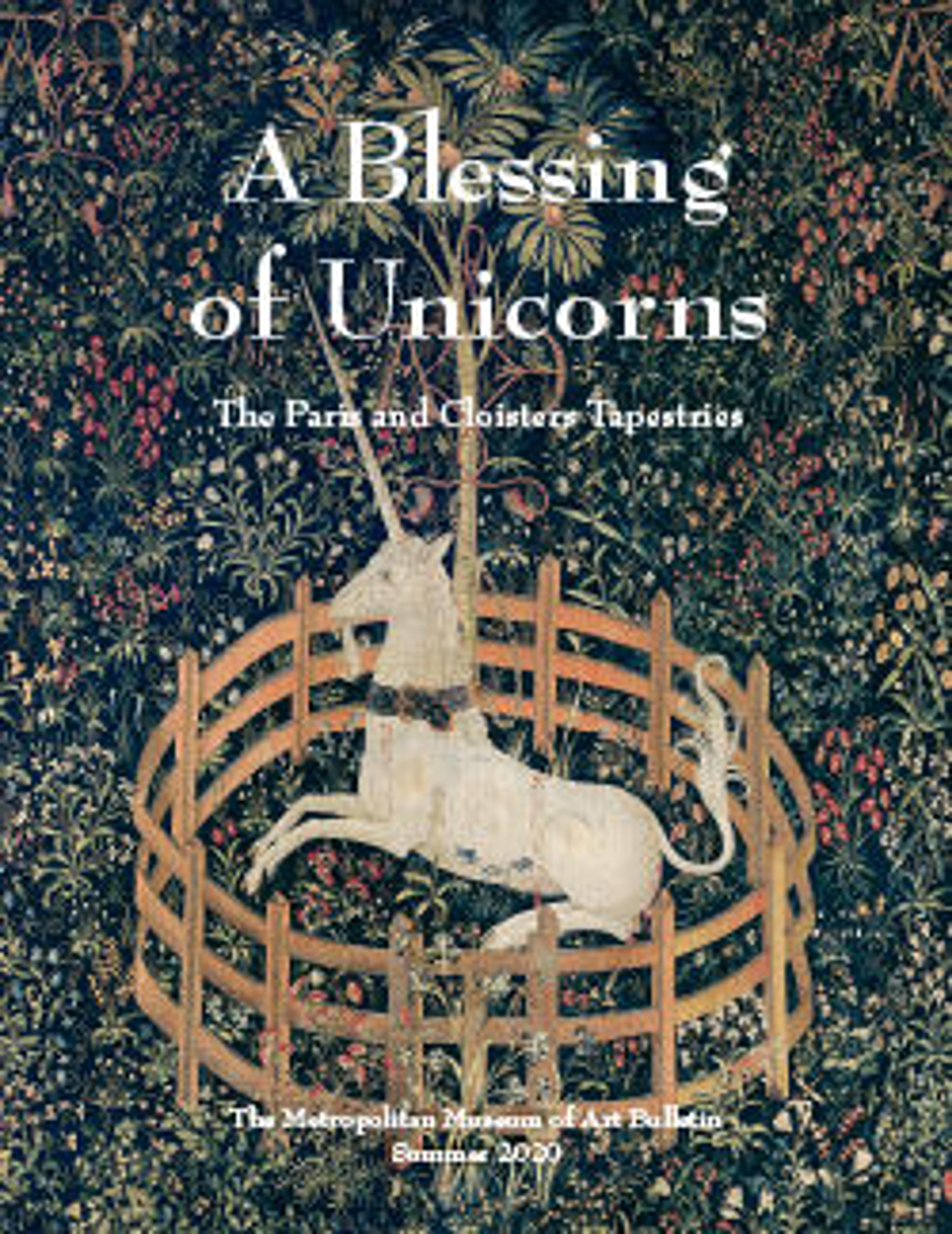The Hunters Enter the Woods (from the Unicorn Tapestries)
The Unicorn Tapestries, as the group of seven is known, were probably designed in Paris but woven in Brussels. They are first documented in 1680, when they hung in the Paris home of François VI de La Rochefoucauld. By 1728 five of them decorated a bedroom at the family's château in Verteuil, in western France. The tapestries were looted during the French Revolution but were recovered in the 1850s; by 1856 they had been restored and rehung in the château's salon. No documentation sheds light on the early history of the tapestries, including either their commission or sequence of hanging. Striking differences in dimension and composition have prompted scholars to question whether the hangings constitute one set or are, in fact, from multiple sets.
The Hunters Enter the Woods, like The Unicorn in Captivity, is set against a millefleurs background: a field of dark green spangled with blossoming trees and flowers. Of the 101 species of plants represented, 85 have been identified, including the prominent cherry tree behind the hunters and lush date palm in front of the sniffing hound. The cipher "AE" that is woven into each of the Unicorn Tapestries—and repeated here five times—alludes to their original owners, who remain unknown.
Artwork Details
- Title:The Hunters Enter the Woods (from the Unicorn Tapestries)
- Date:1495–1505
- Geography:Made in Paris, France (cartoon); Made in Southern Netherlands (woven)
- Culture:French (cartoon)/South Netherlandish (woven)
- Medium:Wool warp, wool, silk, silver, and gilt wefts
- Dimensions:Overall: 145 x 124in. (368.3 x 315cm)
- Classification:Textiles-Tapestries
- Credit Line:Gift of John D. Rockefeller Jr., 1937
- Object Number:37.80.1
- Curatorial Department: Medieval Art and The Cloisters
Audio
63. The Hunters Enter the Woods (from the Unicorn Tapestries)
Gallery 17
NARRATOR: Here you see a group of hunters, accompanied by their hounds, walking in a wooded area full of flowers and trees. There are a total of 101 species of plants represented in the Unicorn Tapestries, of which over 85% have been identified. Some are easy to recognize, such as Daffodils, periwinkles, daisies and violets. Some, for example Lady’s Mantle and Butcher’s Broom, are in fact grown in the gardens at The Cloisters. In addition, chemical analysis has confirmed that three vegetal dyes were used to produce many of the vivid colors you see here. These three dye plants are weld, madder, and woad; they yield the colors yellow, red and blue -- which were then combined to create wide palette needed by the weavers. You can find these and other dye plants growing in the so-called “Artist’s Bed” in the Bonnefont Cloister on the lower level of the Museum. Looking at the tapestry, you will notice that while the hunting party walks through the fields a young boy, half-hidden behind a walnut tree at the upper right-hand corner, signals to the hunters. His gesture suggests that he has spotted something – perhaps the quarry he was entrusted with locating. Now look at the tapestry on the wall to your right, on the left-hand side of the pointed archway. This is called “The Unicorn is Found.”
More Artwork
Research Resources
The Met provides unparalleled resources for research and welcomes an international community of students and scholars. The Met's Open Access API is where creators and researchers can connect to the The Met collection. Open Access data and public domain images are available for unrestricted commercial and noncommercial use without permission or fee.
To request images under copyright and other restrictions, please use this Image Request form.
Feedback
We continue to research and examine historical and cultural context for objects in The Met collection. If you have comments or questions about this object record, please contact us using the form below. The Museum looks forward to receiving your comments.
